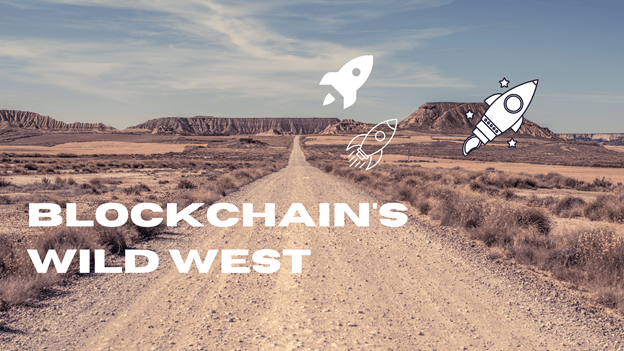The blockchain is much more than cryptocurrencies and their subsequent creations.
If anything, the real deal about blockchain is tokenization–and the surface has barely been scratched.
As an illustration, any operation with registries—government or private—can be ported over to a public ledger for solid benefits. In public blockchains, transparency and security are a notch higher than in private vaults.
Tokenization prospects and the increasing adoption of blockchain solutions explain why Statista analysts are bullish, expecting Blockchain as an industry to reach $127 billion by 2027, up from $1.5 billion in 2018.
The Shift to the Blockchain is Inevitable
The creators of BLOCKS recognize this opportunity and are spearheading the next significant shift of traditional company migration from traditional centralized ledgers to the blockchain.
BLOCKS exists as the first DAO LLC registered in Wyoming, U.S.
Regulatory compliance is just the beginning. The icing on the cake for developers is the preparation of the great migration of traditional industries to the blockchain.
Through their BLOCKS Modules and unique approach to asset tokenization, the platform offers itself as a go-to ledger for industries searching for a payment layer meeting their evolving needs.
BLOCKS Contract Engine and Reactive Smart Contracts (RaCs)
Specifically, by leveraging on the transparency of the blockchain, there are innumerous applications when building on BLOCKS.
From supply chain to tracking, BLOCKS can be used as an eCommerce layer all powered by its Contract Engine for generating Reactive Smart Contracts (RaCs).
RaCs can exist within the BLOCKS network as operators overseeing transaction records, trading, tracking, transfers, payments, and the ledger’s registries. The RaCs framework ingeniously improves existing solutions to perform the above transactional behaviors on behalf of the BLOCKS user.
As such, it means, besides responding to transaction transfer events, their reactive hooks can also allow for automated behaviors between contracts and regular user-created addresses, especially when they operate as on-chain operators.
Added efficiencies include BLOCKS’ interoperability with Ethereum’s virtual engine apart from integrating the ERC-777 standard—an improvement of ERC-20.
Therefore, only a user needs to send tokens once, translating to even lower fees and fewer complications.
BLOCKS Builder Modules, Plans for SDKs and APIs
BLOCKS has several builder modules for developers to pilot programs and create testing zones across several verticals ahead of the great migration.
The Global Asset Validation and Transfer Module tag a Proof-of-Concept (PoC) application on the Ethereum mainnet built using ReactJs and Ionic Framework.
This PoC app creates a special hash for uploaded files using MetaMask as the primary provider for signing transactions. These encrypted files are for authentication during retrieving.
Governments and corporations can use this module for digital registries, trading, verification, and even settlement of asset grids.
Meanwhile, the Digital Catalogues, NFTs, and Tickets Module can safeguard the creative industry by protecting their interest using NFTs.
Additionally, the Low-Cost Minting, Payments, and Settlements Module will aid BLOCKS to develop their first “smart grid network” for blockchain. This interconnection will drastically help slash NFT minting fees while further improving on-chain payments, settlement, and asset verification.
The Ownership Verification and Assurance Module, on the other hand, will ease the speed of transfer, verification, and asset authentication between public and private registries. According to BLOCKS, this builder module can resolve land and titling issues in emerging economies.
BLOCKS also plans to introduce APIs and SDKs. Its GitHub will serve as the official authenticated repository, tracking all progress done by the BLOCKS Lab. Over time, builders using the BLOCKS module via the blockchain’s bridges and chains will continue to populate the repository with new APIs, SDKs, and other vertical modules.
